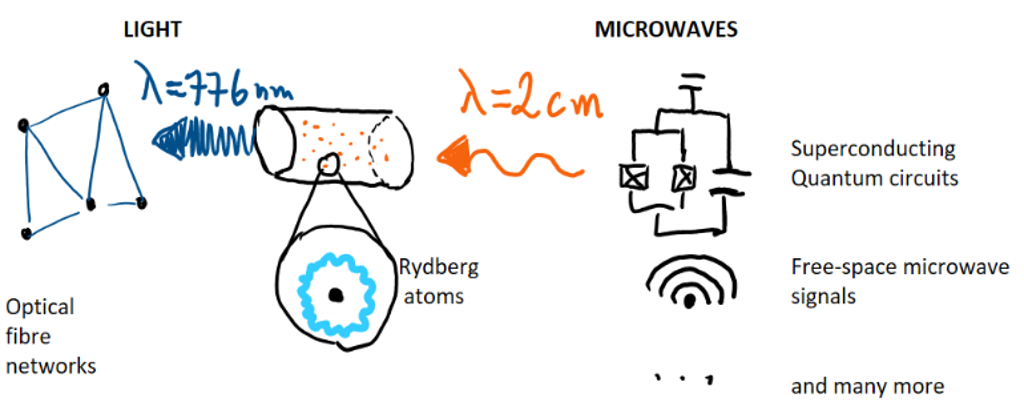"Bridging microwave and optical domains with nonlinear quantum optics enabled by Rydberg atoms"
SONATA grant 2021/43/D/ST2/03114 is funded by the National Science Centre, Poland.
PI: Michał Parniak
Grant amount: 1 720 932 PLN
Project duration: 3 years (June 2022 -- June 2025)
![]()
Project description:
Microwaves and visible light seem very different, but both are in fact composed of photons – or electromagnetic waves – yet at very different frequencies, differing more than ten thousand times. Due to this difference, microwave and optical photons are good for different tasks. Optical photons are excellent information carriers, as they can travel long distances over fibers while being impervious to noise. This fact is used both in modern telecommunication as well as quantum communication, where single photons are used. Microwave photons encounter more troubles when traveling far and thermal radiation pollutes the microwave band with lots of random photos. Yet, when they operate in a cryostat, they are one of the particles that allow state-of-the-art quantum computers to operate, via the so-called transmon qubits. To harness the advantages of both, an interlink is needed, which nowadays attracts the attention of many quantum scientists.

In our project, we propose to construct a bridge between those two domains using the Rydberg atoms of Rubidium. While Rubidium is a well-known tool used in quantum science, here it will be excited to a high principal quantum number (such atoms are called Rydberg), which makes the atom large – a few microns in diameter. When the valence electron is so far from the nucleus, a large dipole moment is present, which allows an extraordinarily strong coupling to microwaves. We will furthermore hit specific resonances, such that atoms may efficiently collect microwave photons. Simultaneously, we will use lasers to couple the same atoms to optical photons at a near-infrared wavelength. The experimental tools used in our project will encompass both hot atoms – which have the advantage of low experimental complexity – and cold atoms – a state-of-the-art system already available in our lab, which is a great playground for observing original and truly quantum effects. The results of our project will be a series of original demonstrations, such as frequency multiplexing conversion of microwaves, as well as spatial imaging, which are not possible in any other system, explored so far.